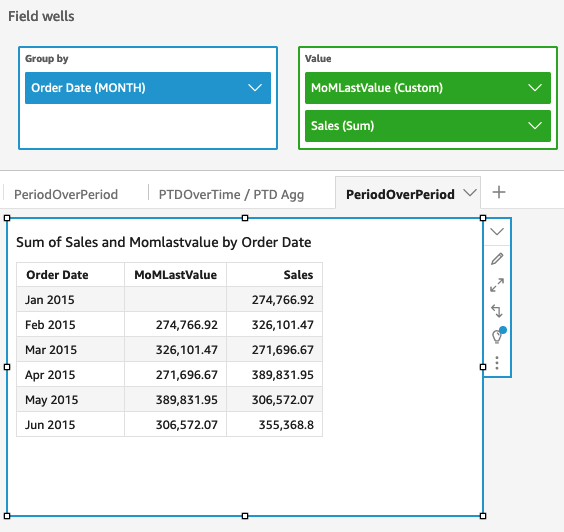periodOverPeriodLastValue
The periodOverPeriodLastValue function calculates the last (previous) value of a measure from the previous time period as specified by the period granularity and offset. This function uses a date-based offset instead of a fixed sized offset. This ensures only the correct dates are compared, even if data points are missing in the dataset.
Syntax
periodOverPeriodLastValue( measure, date, period, offset)
Arguments
- measure
-
An aggregated measure that you want to see the difference for.
- date
-
The date dimension over which you're computing periodOverPeriod calculations.
- period
-
(Optional) The time period across which you're computing the computation. Granularity of
YEARmeansYearToDatecomputation,QuartermeansQuarterToDate, and so on. Valid granularities includeYEAR,QUARTER,MONTH,WEEK,DAY,HOUR,MINUTE, andSECONDS.This argument defaults to the granularity of the visual aggregation
- offset
-
(Optional) The offset can a positive or negative integer representing the prior time period (specified by period) that you want to compare against. For instance, period of a quarter with offset 1 means comparing against the previous quarter.
This argument default value is 1.
Example
The following example calculates the month over month value in sales with the visual dimension granularity and default offset of 1.
periodOverPeriodLastValue(sum(Sales), {Order Date})
The following example calculates the month over month value in sales with a fixed granularity of MONTH and fixed offset of 1.
periodOverPeriodLastValue(sum(Sales), {Order Date},MONTH, 1)
